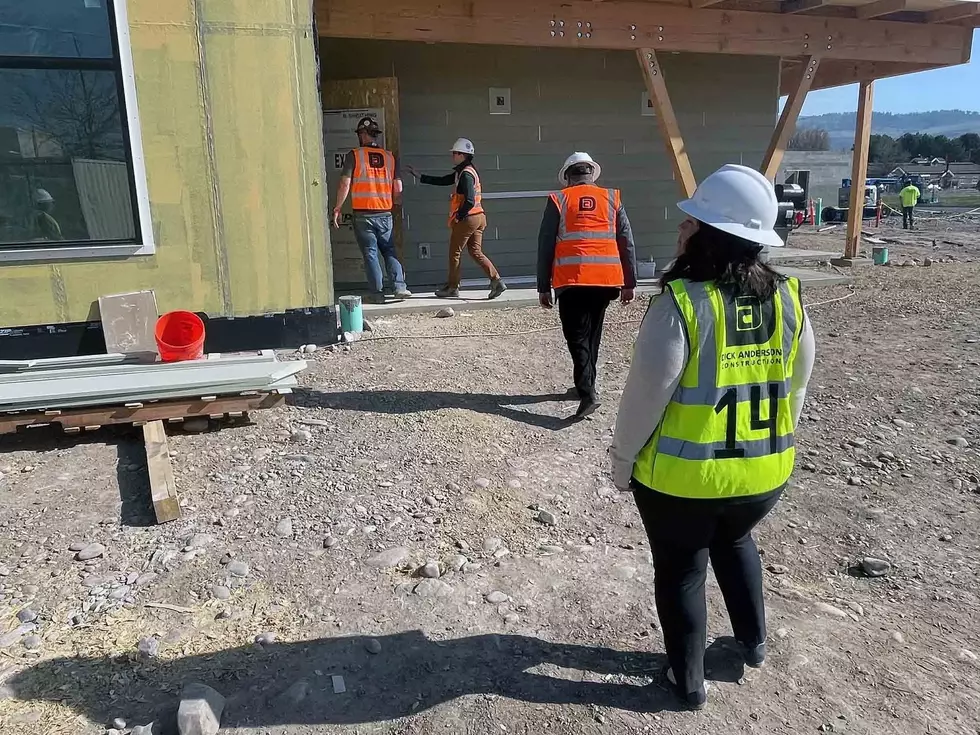
Federal grant to help preserve fish, floating on Clark Fork River
Laura Lundquist
(Missoula Current) With the help of a federal grant, river conservationists are one step closer to opening more of the upper Clark Fork basin to fish and people.
At the end of December, the U.S. Department of the Interior announced grants of more than $51 million to watershed and river restoration projects nationwide through the Bureau of Reclamation’s new WaterSMART Aquatic Ecosystem Restoration Program. The Bureau of Reclamation awards were made possible through the 2021 Bipartisan Infrastructure Law.
Within the awards package, Trout Unlimited received $5.8 million for projects in Montana, Idaho, Wyoming and Colorado to improve fish passage, aquatic habitat, water retention, agricultural irrigation, water quality and reduce erosion.

Out of that total, work in the upper Clark Fork River basin received $594,000. Montana Trout Unlimited has teamed up with the Clark Fork Coalition, the state Natural Resource Damage Program, local groups and private irrigators to address streamflow and fish passage at 10 sites on the upper Clark Fork River and Rock Creek. The Natural Resource Damage Program settlement with the Atlantic Richfield Company to clean up historic Anaconda Company mining pollution addresses the need for fisheries restoration, so the Natural Resource Damage Program put up matching funds for the grant.
Casey Hackathorn, Trout Unlimited Montana State director, said the money would fund two-years of work to design fish-friendly infrastructure and replace aging diversion dams. The work would improve connectivity for all fish but especially threatened bull trout.
“In the upper Clark Fork, Andy Fischer of the Clark Fork Coalition and I have been working for the last several years trying to get all of the dams on the river either replaced or retrofitted to provide fish passage and to let people float through there,” Hackathorn said. “There’s so much work being done on restoring that reach of river affected by past mining and smelting, and it would be a shame to leave it disconnected for people and fish. That need had kind of fallen through the cracks of the restoration planning.”
Originally, there were eight diversion dams on the upper Clark Fork, but over the past several years, conservation groups have made changes to three. The five dams that remain are larger, more challenging projects that would have been difficult to plan for without the federal grant, Hackathorn said.
“This is not the funding to do the work yet, but it will get us one step closer,” Hackathorn said. “This was the first round of funding for the Aquatic Ecosystem Restoration Program, and we weren’t really sure about how competitive we would be. So we were really excited to get this news right before the holidays.”
The five sites on Rock Creek are slightly different. The dams aren’t quite as big as those on the Clark Fork River, so they don’t really affect floating. But fish still get trapped in irrigation ditches, so most of the work will involve installing fish screens.
“We’re trying to get more fish downstream to the Clark Fork River and promote a more resilient fishery in both locations,” Hackathorn said. “This grant is for design and planning for the next two years, and then we’ll have to go get more money to do the actual work.”
Trout Unlimited will be using the grant money to do similar work in other states. In Idaho, Trout Unlimited is working with the city of Boise to provide fish passage and improve aquatic habitat in the Boise River. The $734,000 of the $1.1 million project.
In Colorado, Trout Unlimited is working with the Middle Colorado River Agriculture Collaborative to upgrade, relocate or combine six diversion structures to remove barriers to fish passage on Elk Creek. The grant there provides $3 million of the $4.85 million project.
Finally, in partnership with the Wyoming Department of Game & Fish, Trout Unlimited is installing beaver dam analogs, aggradation structures and an invasive species barrier on Sage Creek to restore 453 acres of valley floor habitat and protect almost 80 miles of native cutthroat trout habitat from invasive trout in the downstream Flaming Gorge Reservoir. The Wyoming grant provides $1.5 million of the $2 million project.
“For years, TU has worked with rural communities affected by drought to care for and sustain water supplies. These new awards will strengthen our efforts to build drought resilience across Montana, Idaho, Colorado, and Wyoming,” said Emily Olsen, TU’s Rocky Mountain Region vice president in a release.
Contact reporter Laura Lundquist at lundquist@missoulacurrent.com.
Missoula's Beartracks Bridge Rebuild
Gallery Credit: Dennis Bragg
More From Newstalk KGVO 1290 AM & 98.3 FM









